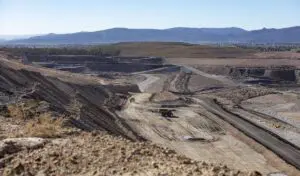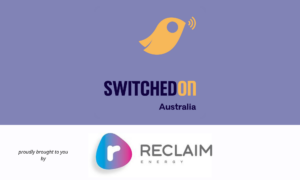
As the interminable electricity privatisation debate rolls on, more important issues about the future of Australia’s electricity industry are being overlooked.
Electricity consumption is trending down, while solar power is steadily increasing. Lights, appliances and buildings are becoming more efficient, and battery energy storage and electric vehicles are expected to proliferate.
In short, dirty centralised power is in decline and cleaner, smarter, decentralised energy is in the ascendant.
It sounds encouraging, but we are at a turning point. The development of a cleaner, more affordable and sustainable energy future depends crucially on what happens next. Will our energy companies seek to embrace or delay decentralised energy?
This hinges on whether they choose to adopt a new scheme which you might not have heard of, but which could potentially reduce households’ annual power bills by hundreds of dollars while also helping energy firms manage the move to decentralised energy.
Changing tack
Since 2008, the Australian Energy Regulator (AER) has given our electricity network businesses strong regulatory incentives to build infrastructure. The more poles, wires and substations they built, the bigger their “asset base”, and the bigger their profits. It is no surprise, then, that in the past five years Australian networks have spent more than ever on infrastructure – hence why electricity prices have doubled between 2007 and 2014.
The new scheme could change all that – assuming that our energy regulators are ready to face the future. The Australian Energy Market Commission (AEMC), which sets the rules for the industry, is considering a change to support decentralised energy.
The Demand Management Incentive Scheme Rule Change would require the AER to give the network business incentives to help customers cut their electricity demand. Submissions on the rule change proposal close on 19th March 2015.
What will the new rules mean?
“Demand management” is where a power company invests in helping consumers to save energy or reduce demand, rather than building more capacity in the form of power stations, power lines and substations. Research commissioned by the AEMC estimates the potential consumer savings at between A$4 billion and A$12 billion, which translates to annual household bill reductions of A$120 to A$500.
Demand management is not new. Off-peak hot water tariffs have been offered in Australia since the 1930s. More recent examples include:
• the Positive Payback scheme offered by Energex in southeast Queensland, which rewards customers for buying and using energy-efficient air conditioners, pool pumps and other appliances. More than 40,000 households have signed up, helping to reduce the network’s peak summer demand by more than 100 megawatts.
• a scheme that will see New York electricity supplier Consolidated Edison spend US$200 million (A$260 million) on batteries, energy efficiency and load reduction in order to defer US$1 billion of network upgrades.
There are many other examples around the world, but still relatively few in Australia.
The case for changing the rules
The rule change was recommended by the AEMC in 2012 to help rein in the massive spending on network infrastructure.
If the rule change is not adopted, the AER will probably not provide meaningful incentives for demand management. Networks will be discouraged from undertaking demand management and instead be encouraged to continue their past practice of building infrastructure and maximising profits.
Fixed charges for network services are likely to rise and variable charges for energy will fall. There will be fewer incentives to support energy efficiency, peak load management and local generation. This will give consumers less control over their energy bills and make energy efficiency, solar panels and batteries less attractive.
It will lock Australia into an outmoded, centralised model of electricity generation, at a time when technology and market trends all point towards more decentralised energy.
Friend or foe?
Our energy utilities have seldom been so subject to criticism. Complaints and disconnection rates have spiked, power companies have found themselves in court over issues ranging from misleading marketing practices to bushfires, and green groups have run television ads attacking the “dirty three” power companies.
In this context, it is not surprising that the Queensland and New South Wales governments have struggled to convince voters to let them privatise poles and wires. But the fundamental issue is not who owns the electricity industry, but how we ensure that it operates in the public interest.
With the recent hike in electricity prices, the rise of decentralised energy and the need to rapidly decarbonise our energy, it is crucial that our networks are trusted consumer and the community partners. We rely on the network companies to keep the lights on and restore power after blackouts. We should be able to rely on them to keep power affordable and sustainable.
As a 2013 ISF report has noted, effective demand management incentive schemes have been established in dozens of places overseas. The report found that savings from demand management in Australia are less than half the average rate of the United States, (and much less than in leading US states like California and New York). Moreover, the bulk of savings in Australia have been delivered in just one state: Queensland, where the state government has actively supported the idea.
Back in the 1970s, before privatisation, the State Electricity Commission of Victoria ran a memorable television advertisement, featuring a square-jawed electricity linesman venturing out into a wild, stormy night to restore power to cold, darkened homes. Its message was summed up by the soundtrack of James Taylor singing “You’ve got a friend”.
The outcome of the DMIS Rule change proposal will determine whether this is still true in the coming years.
![]()
Source: The Conversation. Reproduced with permission.








